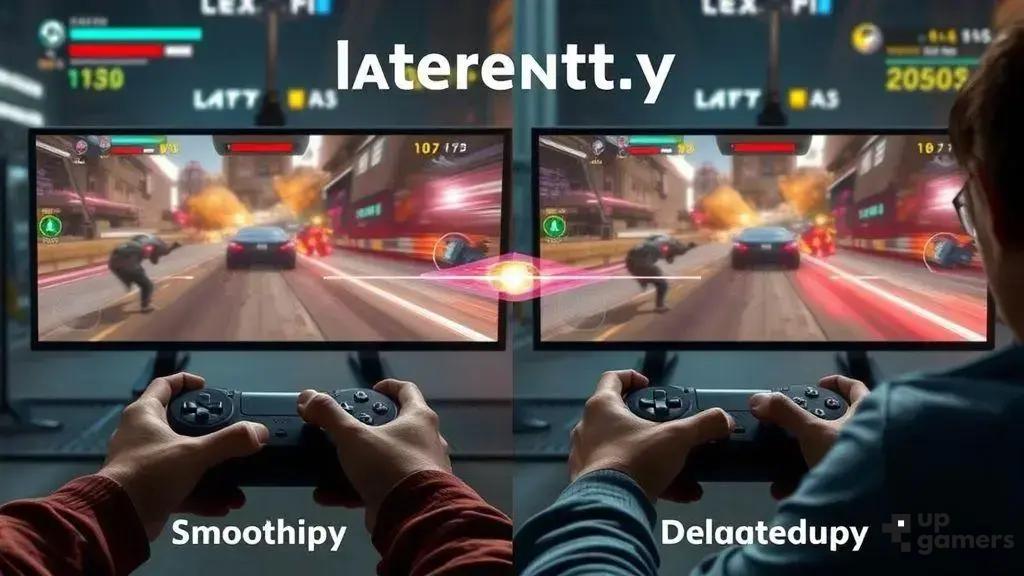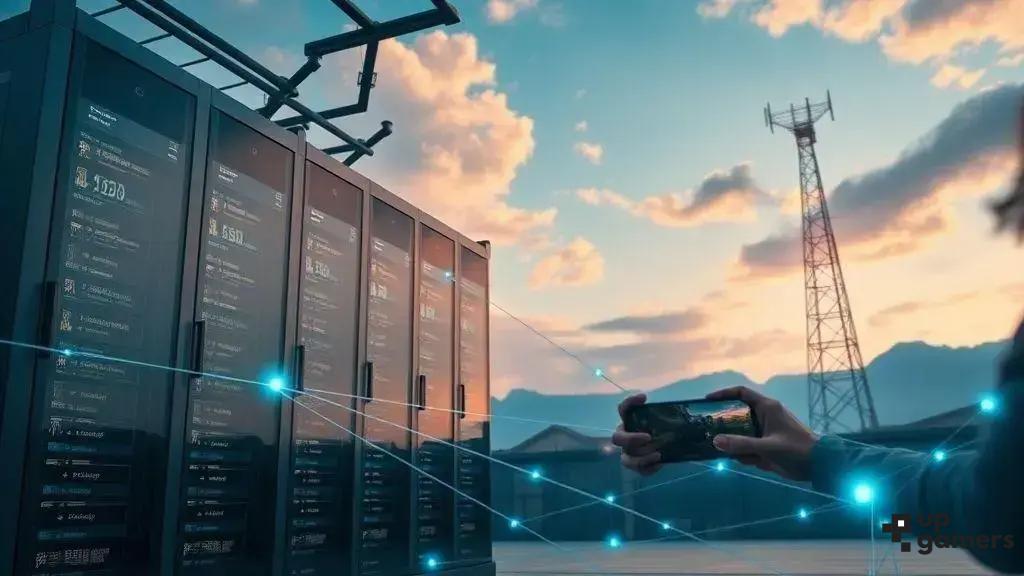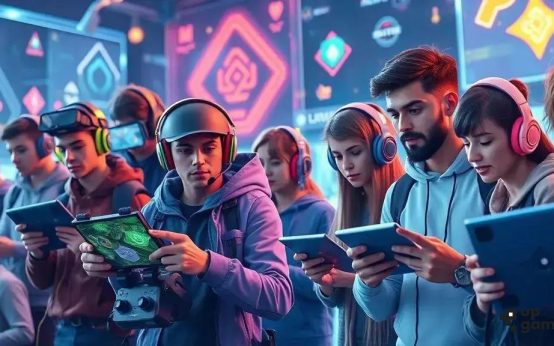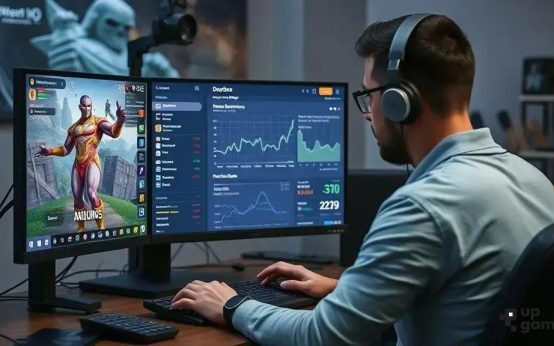Cloud gaming latency affects gameplay responsiveness and currently limits the ability of cloud gaming to fully replace traditional consoles, which still offer lower latency and more reliable performance for gamers.
Cloud Gaming Latency: Can It Replace Consoles? is a hot topic among gamers curious if streaming games can match the performance of consoles. Ever wondered how those tiny delays might change your gaming sessions? Let’s dive in.
understanding cloud gaming and its technology
Cloud gaming allows players to stream games directly from remote servers instead of downloading or installing them locally. This technology relies on powerful data centers that process the game and send video streams to the player’s device in real time. The player’s inputs, like button presses or mouse clicks, are then sent back to the server.
Key Components of Cloud Gaming
First, high-speed internet is essential to minimize delays and deliver a smooth gaming experience. Next, data centers with powerful GPUs handle the graphics rendering remotely, which means users need only a compatible device and internet connection to play.
This setup enables gamers to access high-end titles on low-spec hardware, such as smartphones or basic laptops. However, the constant data transmission between player and server introduces latency, which can affect gameplay sensitivity.
Understanding how cloud gaming technology works helps in recognizing its strengths and current limitations. As technology advances, servers, internet speeds, and compression techniques improve, cloud gaming becomes more viable as an alternative to traditional consoles.
how latency affects gameplay experience

Latency refers to the time delay between a player’s action and the game’s response. In cloud gaming, this delay can cause noticeable input lag, which affects how well you can play fast-paced games. Even a small delay of 30 to 50 milliseconds can change the game’s feel significantly.
Impact of Latency on Gameplay
Fast reaction games like first-person shooters or fighting games are the most sensitive to latency. Delays can cause missed shots, slow responses, and a frustrating experience. On the other hand, slower-paced games like strategy or turn-based titles handle latency better.
Latency is affected by factors such as internet speed, distance from the server, and network congestion. Higher latency can cause frame drops and stuttering in the video stream, disrupting the smoothness of gameplay and visual quality.
Players expecting the instant feedback familiar from consoles might find cloud gaming challenging due to these delays, which can impact competitive play. Understanding latency’s effect helps gamers decide if cloud gaming suits their gaming style and expectations.
comparing cloud gaming and traditional consoles
Traditional consoles run games locally, using installed hardware like CPUs and GPUs to process graphics and gameplay instantly. This local processing offers very low latency and smooth performance, which is ideal for competitive and fast-paced gaming.
Advantages of Traditional Consoles
Consoles provide consistent performance with no dependence on internet speed. They support a wide range of game libraries and offer offline play. Additionally, consoles often include physical controllers designed for precise input.
How Cloud Gaming Differs
Cloud gaming streams games from remote servers, removing the need for specialized hardware. This allows gamers to access high-quality games on various devices without upgrades. The downside is reliance on internet stability and potential latency which can affect responsiveness.
While cloud gaming offers greater convenience and accessibility, it may struggle with graphical fidelity and input lag compared to consoles, especially on slower connections.
The choice depends on player priorities: consoles for reliable, high-performance play or cloud gaming for flexibility without expensive hardware.
technological advances reducing latency

Recent technological advances have played a key role in reducing latency in cloud gaming. One major development is the rollout of 5G networks, which offer faster speeds and lower ping times compared to previous wireless technologies. This helps minimize delays during game streaming.
Improved Data Centers and Edge Computing
Cloud providers are deploying edge servers closer to players, shortening the physical distance data has to travel. This approach reduces the time it takes for inputs and game data to be transmitted, significantly cutting down latency.
Additionally, advancements in video compression algorithms allow high-quality game streams to be delivered more efficiently, requiring less bandwidth and reducing buffering issues.
Hardware improvements in server GPUs and faster processing chips also enable games to run smoothly at the server end, limiting lag from computation delays.
Together, these innovations are closing the gap between cloud gaming and traditional consoles, making streaming games more responsive and enjoyable for players worldwide.
future prospects: will cloud gaming replace consoles?
The future of gaming is rapidly evolving, leading many to wonder if cloud gaming will eventually replace traditional consoles. With ongoing improvements in internet infrastructure and streaming technology, cloud gaming offers unmatched convenience and access.
Growing Accessibility and Convenience
Cloud gaming removes the need for expensive hardware, allowing players to enjoy high-quality games on almost any device. This accessibility could attract a broader audience and shift the market away from physical consoles.
Challenges That Remain
However, challenges such as latency, internet dependency, and ownership concerns still limit cloud gaming’s ability to fully replace consoles. Many gamers value the reliability and performance of local hardware, especially in competitive scenarios.
Subscription models and game libraries also play a critical role. Traditional consoles offer exclusive titles and offline play, while cloud services must continue expanding their catalogs and improving user trust.
Hybrid Approaches and Coexistence
It’s possible that cloud gaming and consoles will coexist, with hybrid models emerging. Gamers might use cloud services for casual play and consoles for dedicated gaming sessions requiring low latency and high performance.
As technology advances, cloud gaming’s role will surely grow, but the complete replacement of consoles may take years and depend on overcoming current technical and market barriers.
Is cloud gaming ready to replace consoles?
Cloud gaming is changing the way we play games, offering ease and access without costly hardware. Yet, latency and internet demands still hold it back from fully replacing consoles.
Traditional consoles offer reliable performance and offline play, which many gamers still value. Cloud gaming will likely grow alongside consoles, giving players more choices depending on their needs.
As technology improves, cloud gaming could become even more popular, but for now, consoles remain important for many serious gamers. The future may bring a balance where both options serve different purposes.
FAQ – Common Questions About Cloud Gaming and Consoles
What is cloud gaming and how does it work?
Cloud gaming streams games from remote servers to your device, allowing you to play without powerful local hardware.
How does latency affect cloud gaming?
Latency causes delays between your actions and the game’s response, which can impact gameplay especially in fast-paced games.
Can cloud gaming completely replace traditional consoles?
Not yet. While cloud gaming is growing, issues like latency and internet dependency still make consoles a preferred choice for many gamers.
What are the benefits of traditional gaming consoles?
Consoles offer reliable performance, offline play, low latency, and access to exclusive games, making them ideal for serious gamers.
How is technology improving cloud gaming latency?
Advances like 5G networks, edge computing, better video compression, and faster data centers help reduce latency and improve streaming quality.
Will cloud gaming and consoles coexist in the future?
Yes, it is likely both will coexist, with cloud gaming complementing consoles by offering accessibility and flexibility for different types of players.




